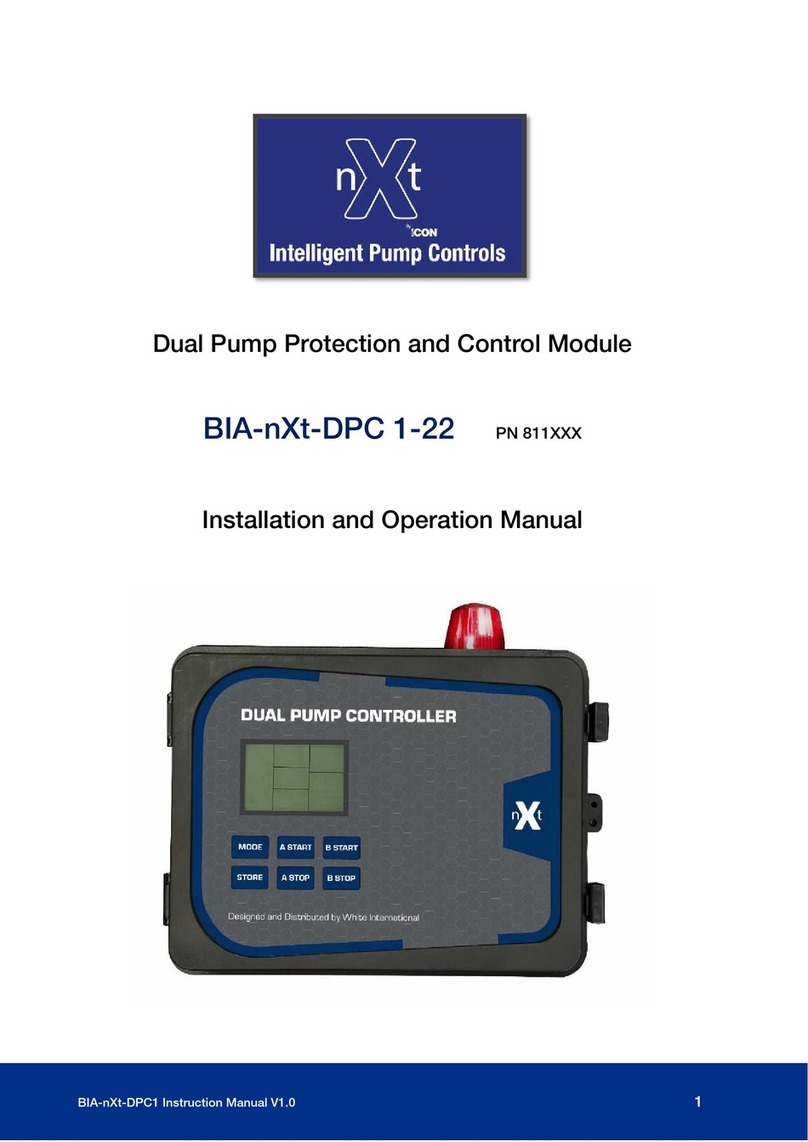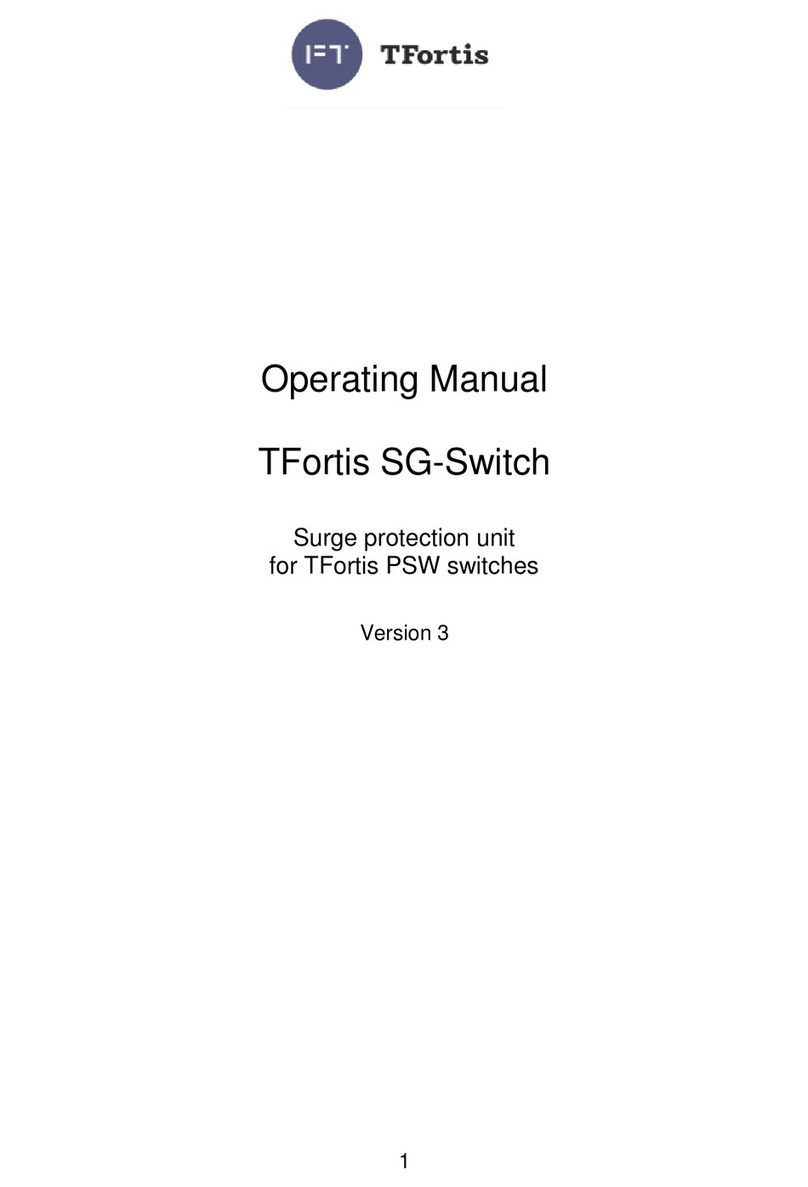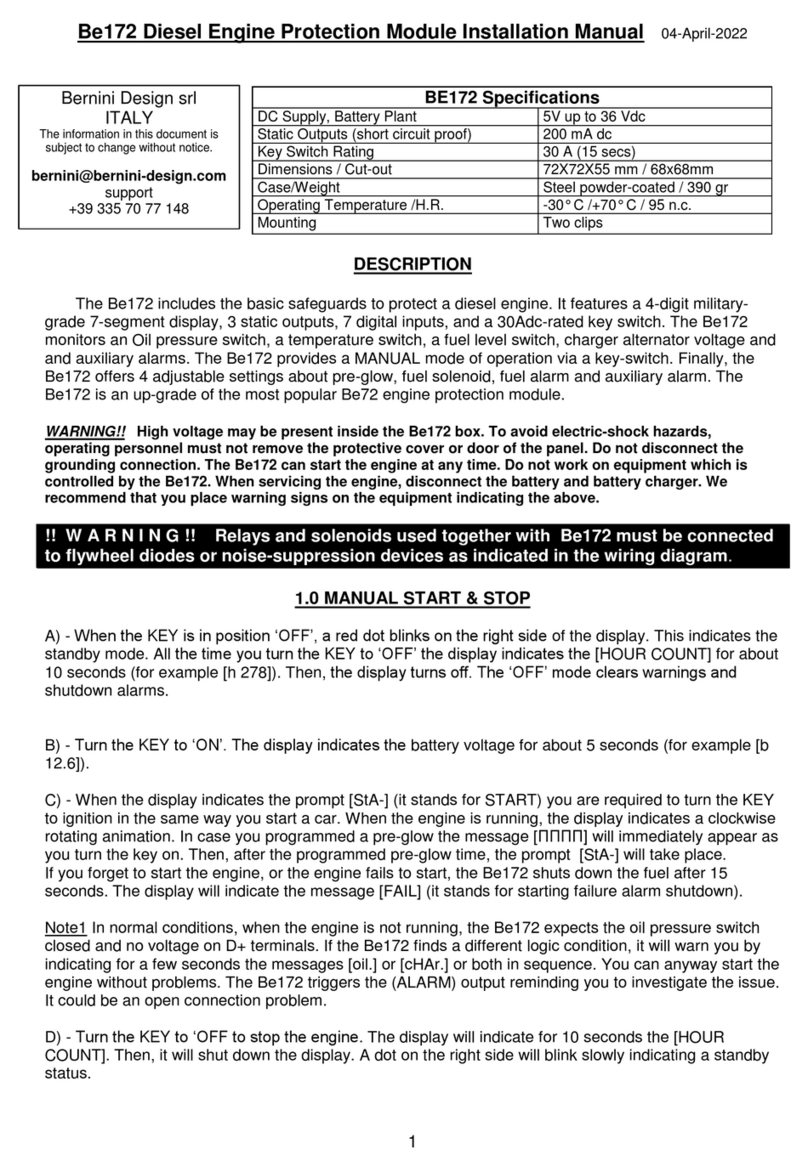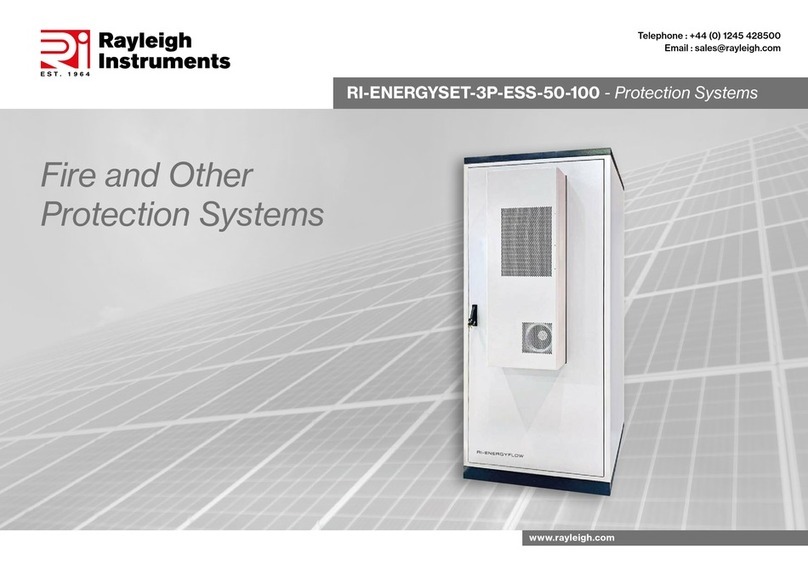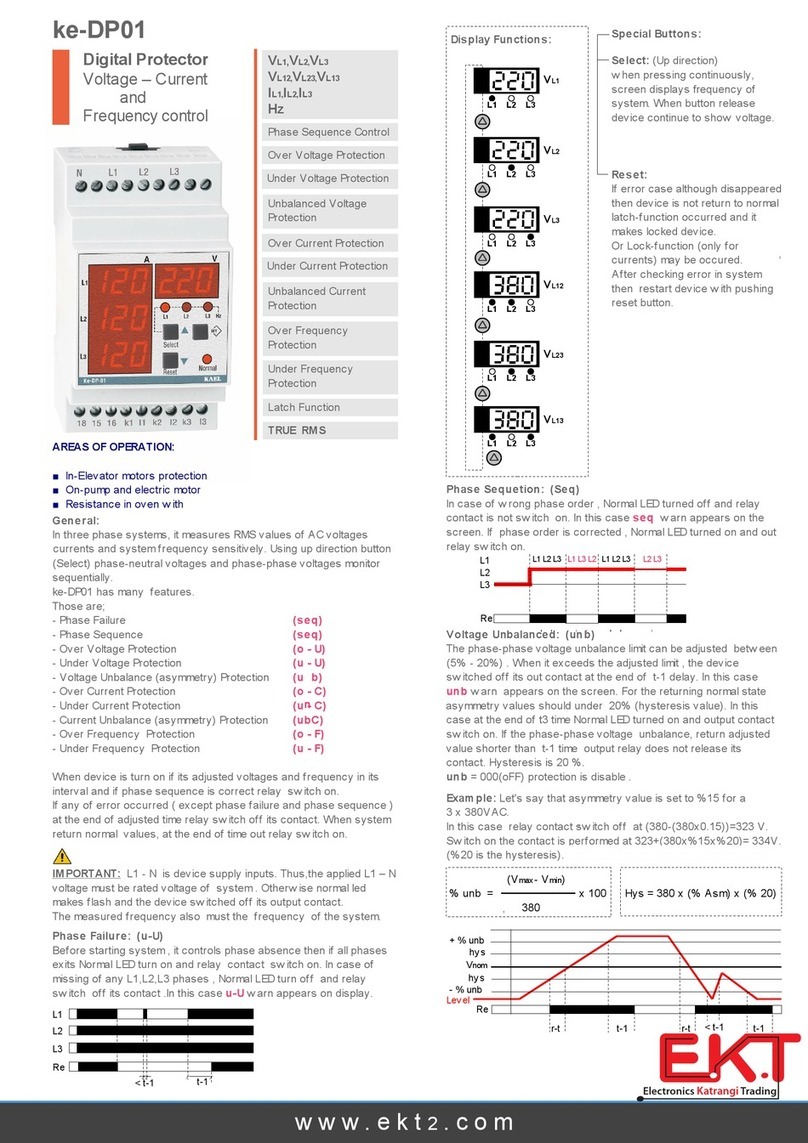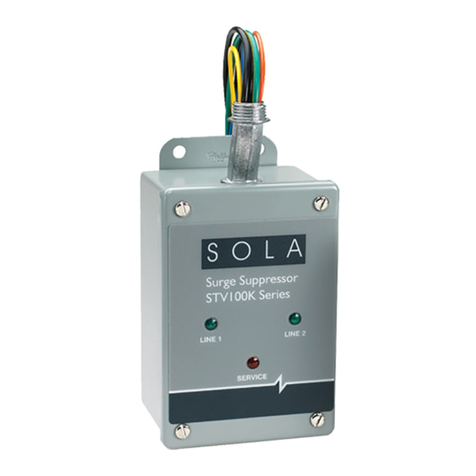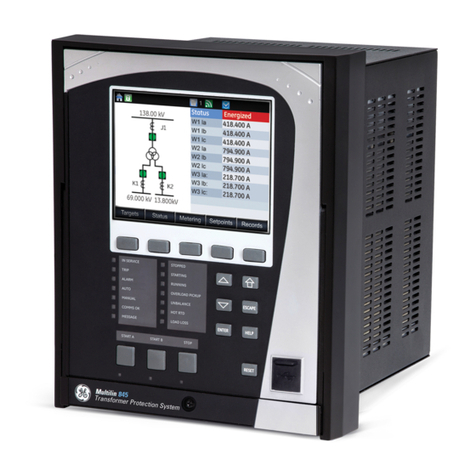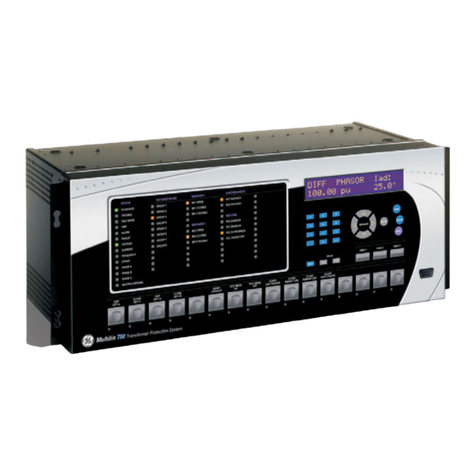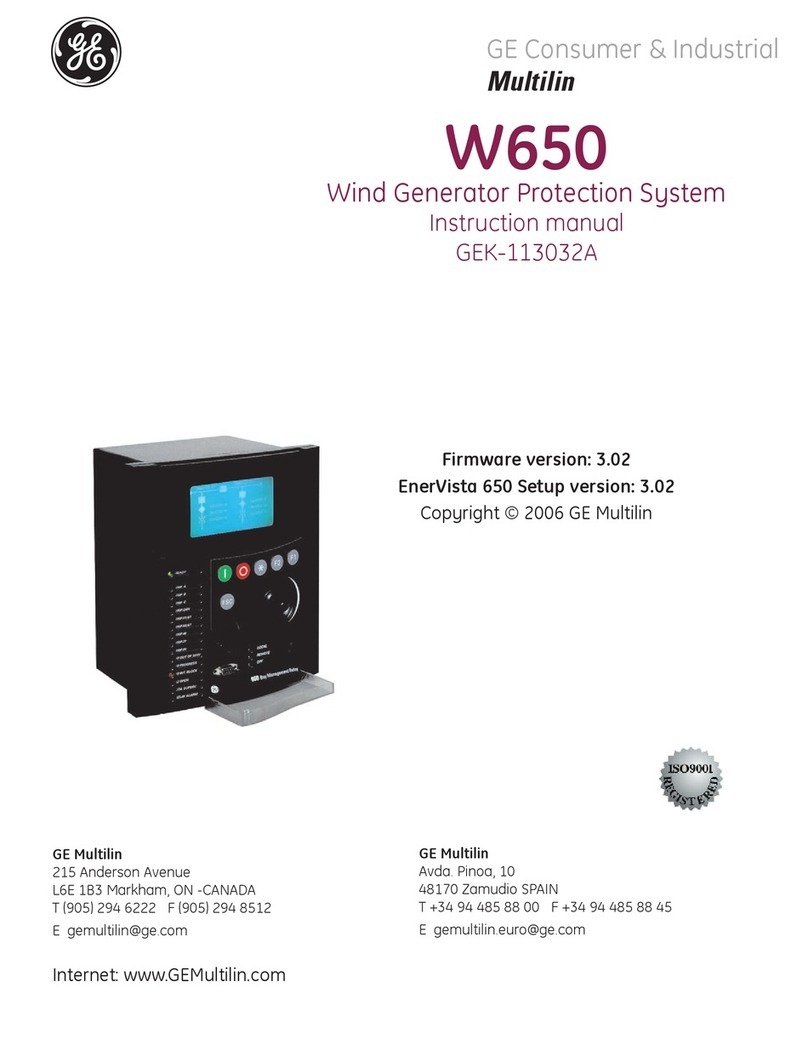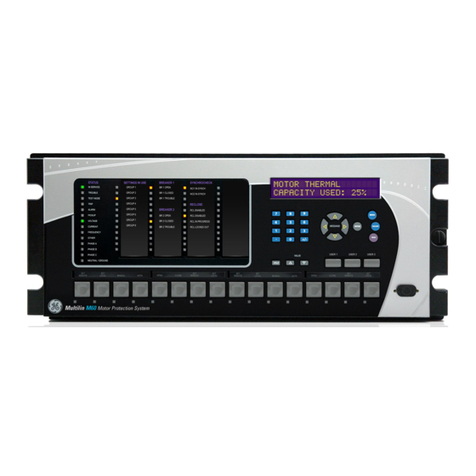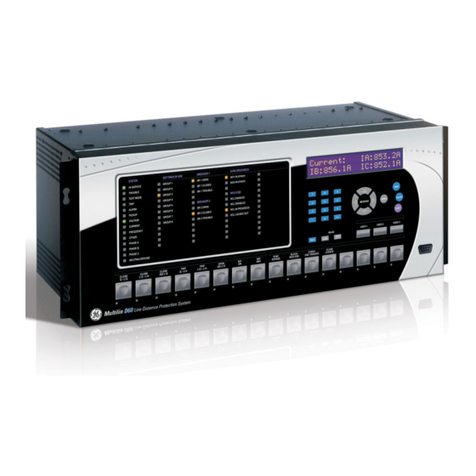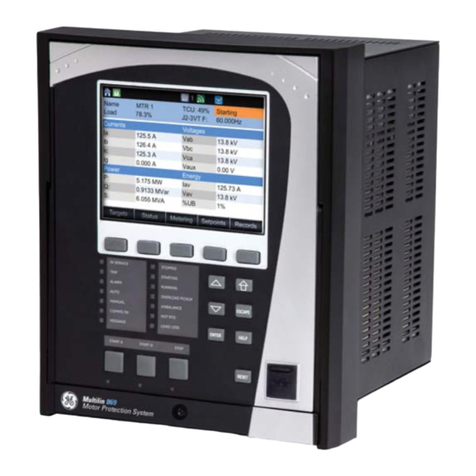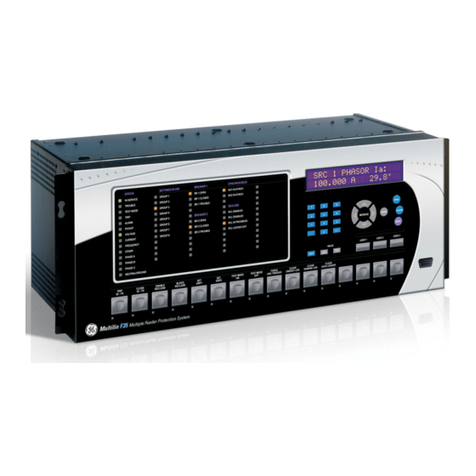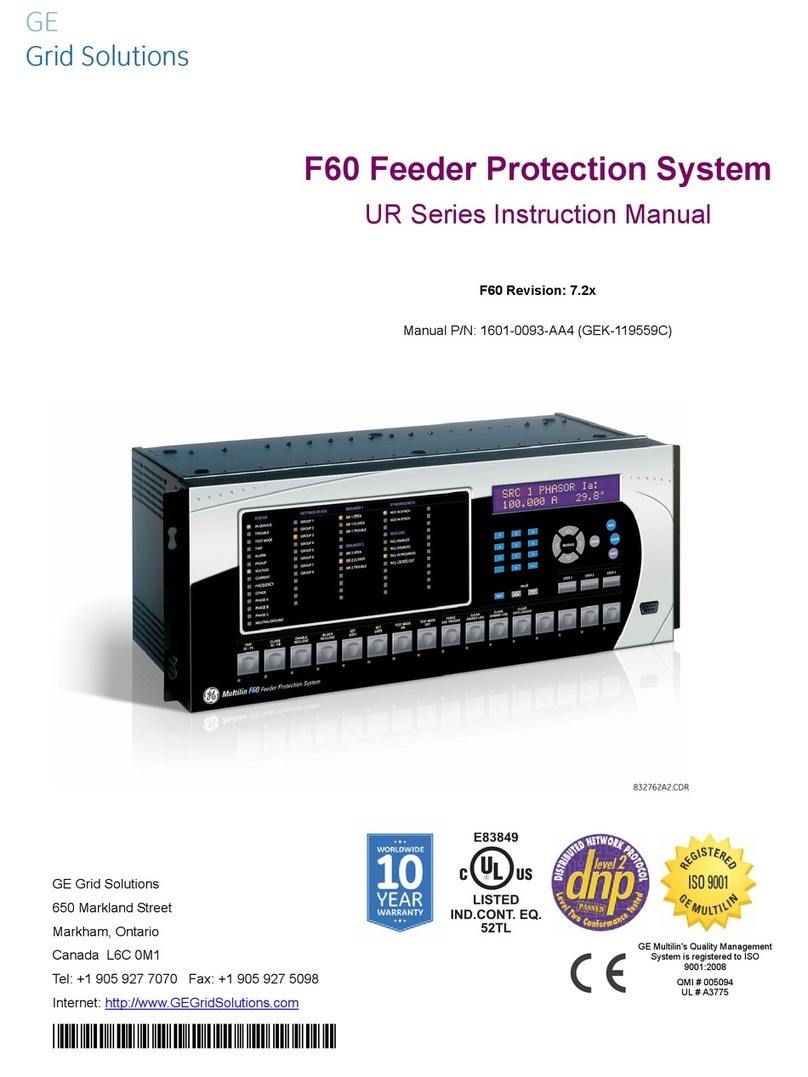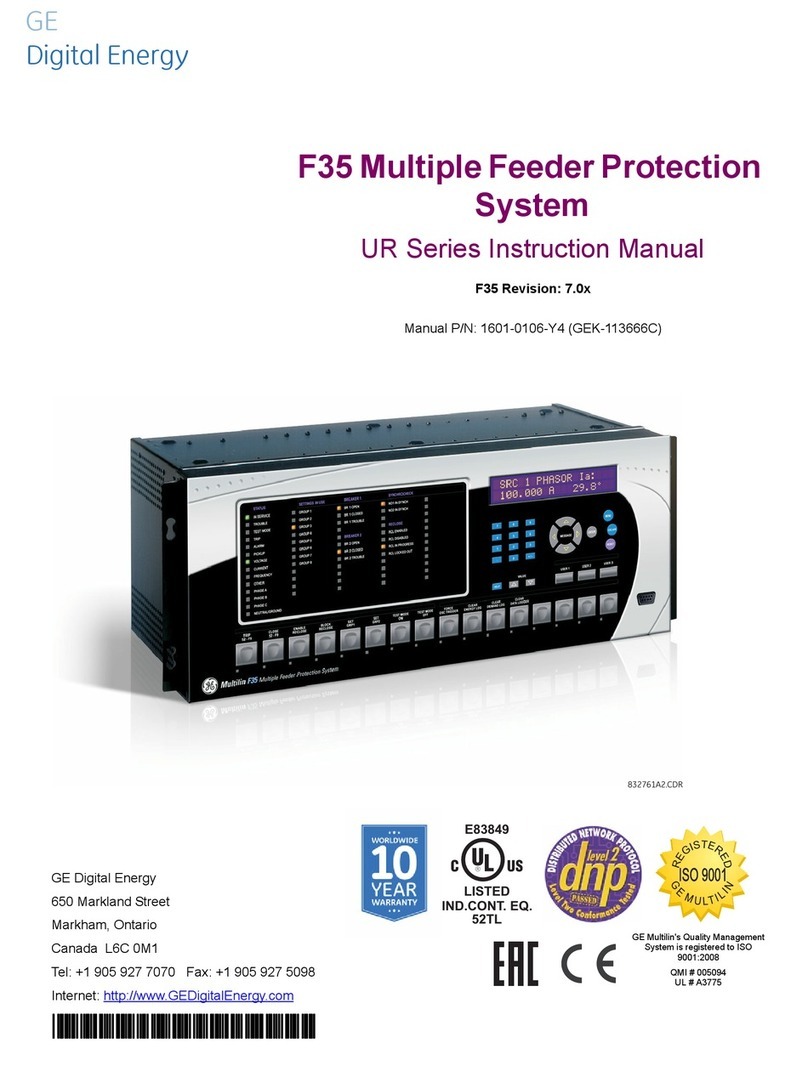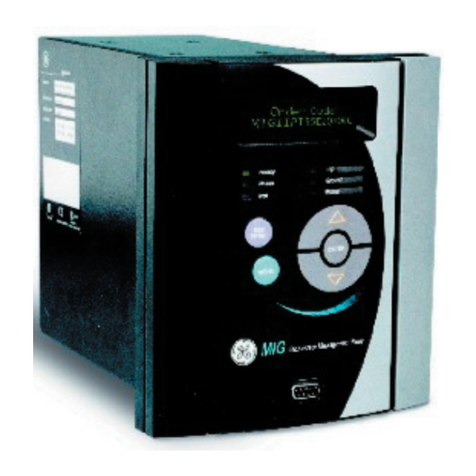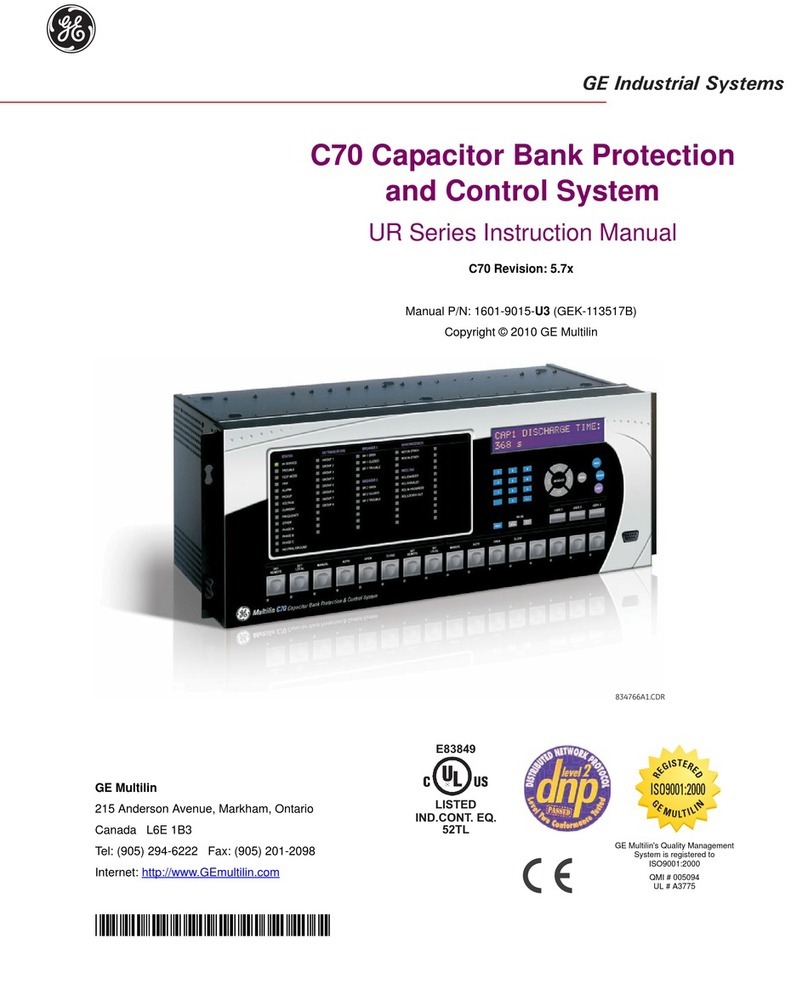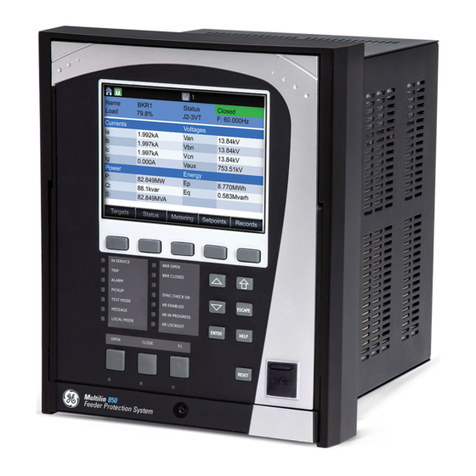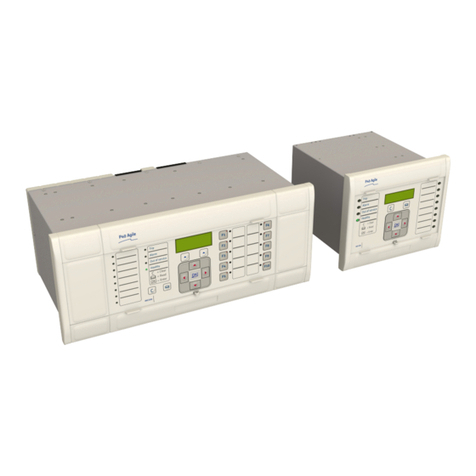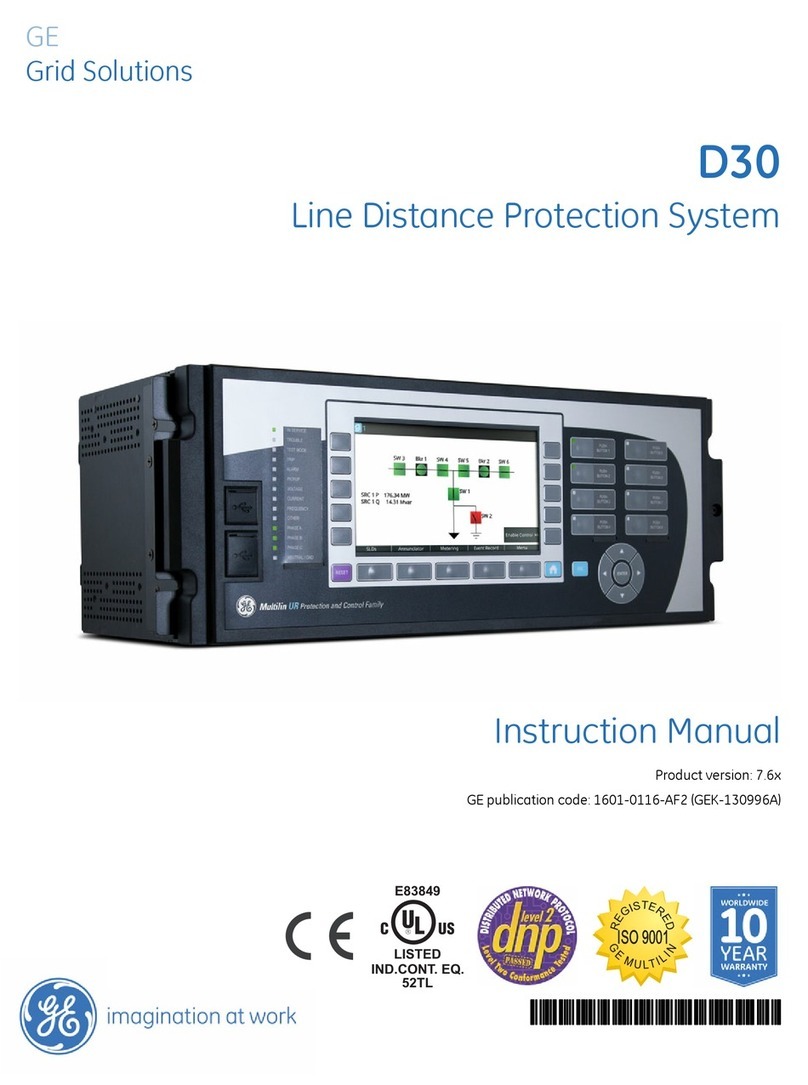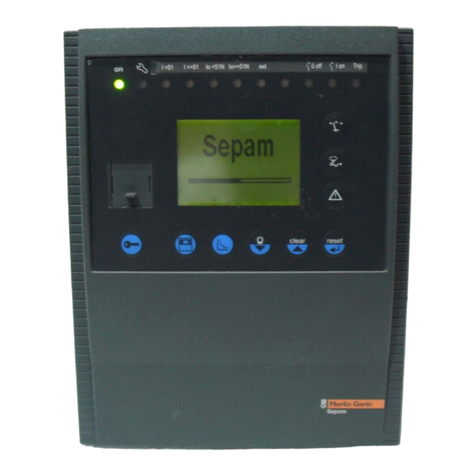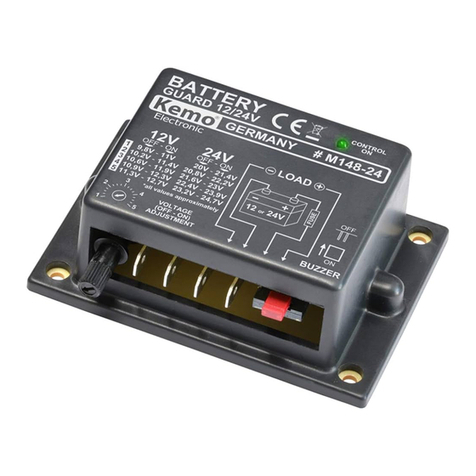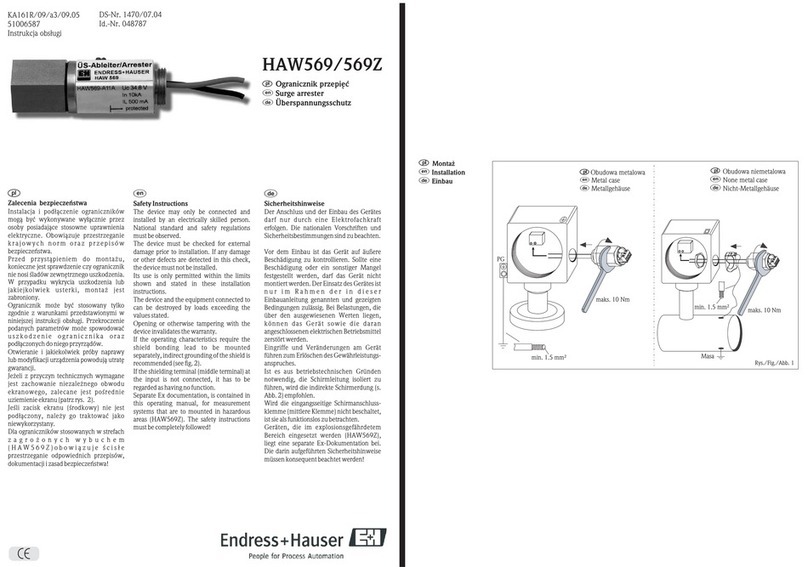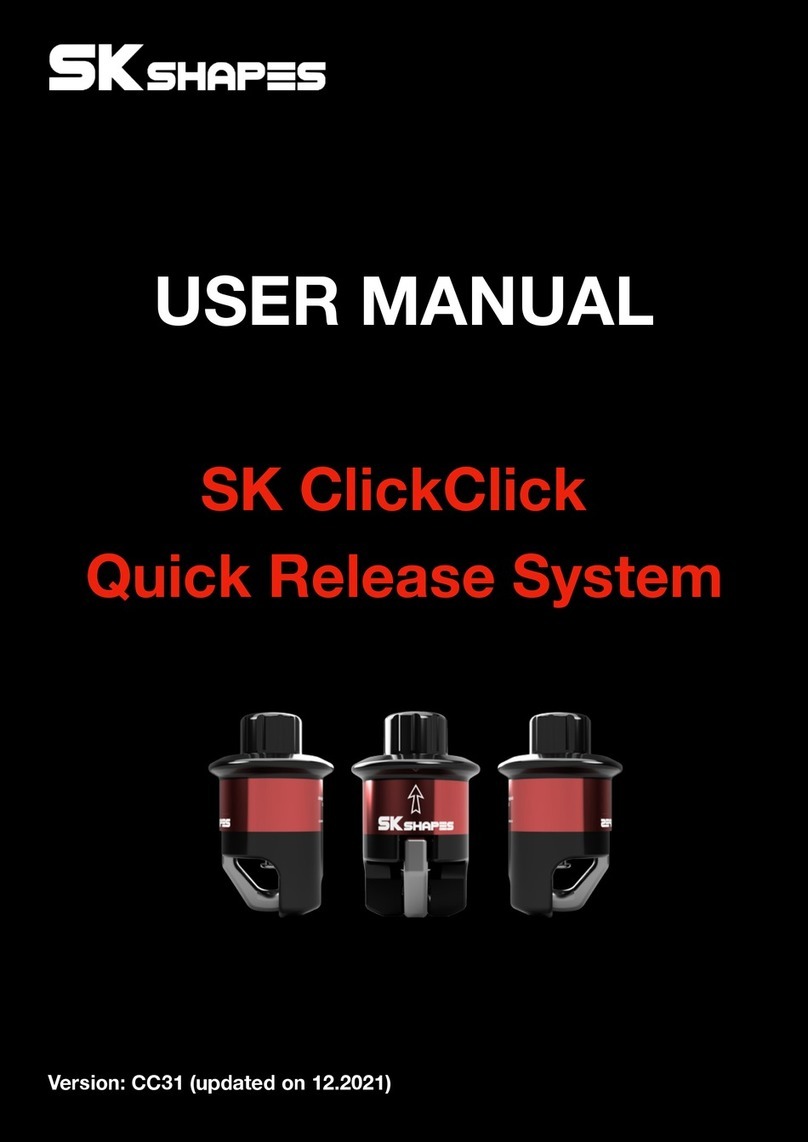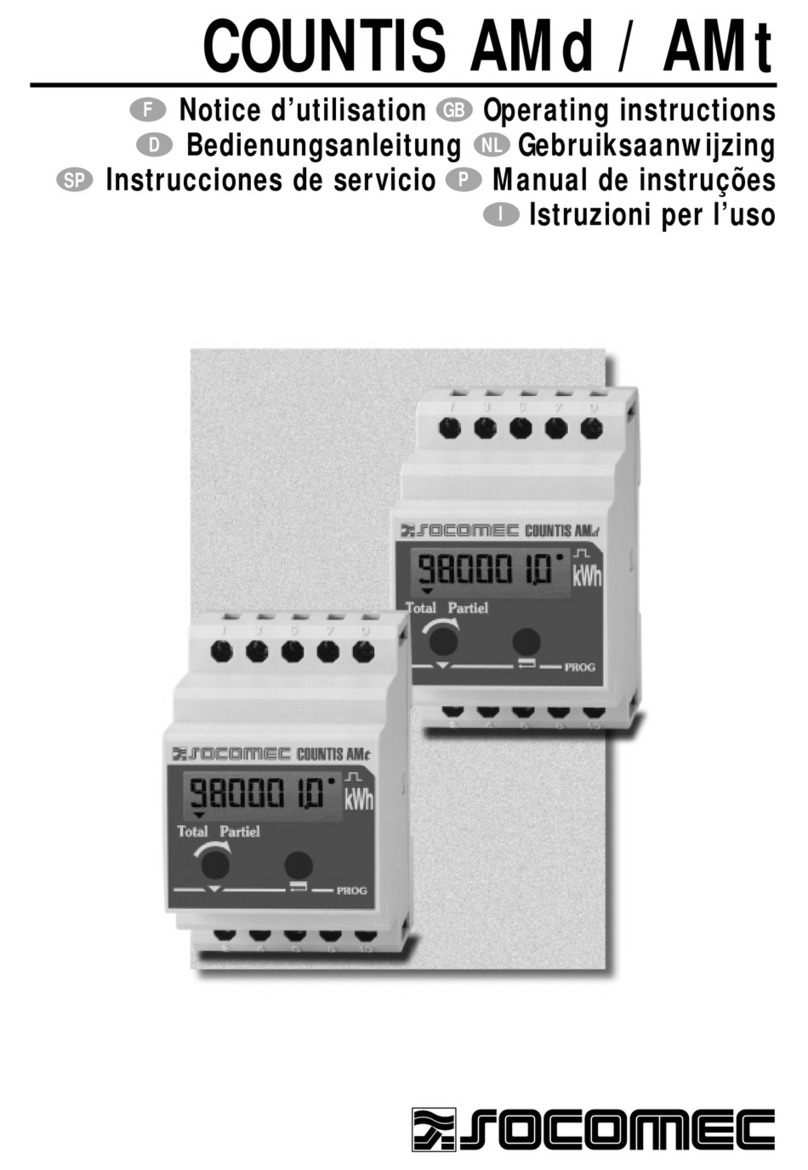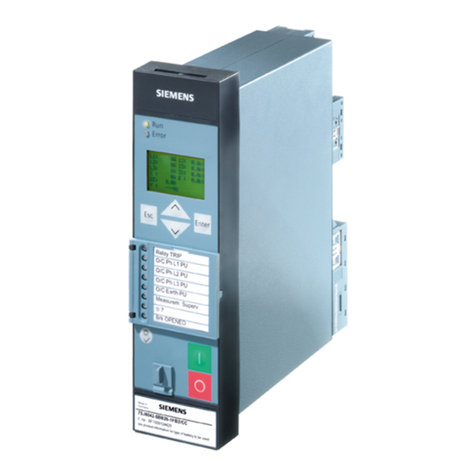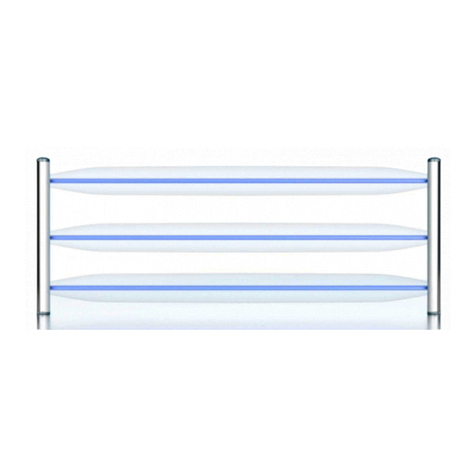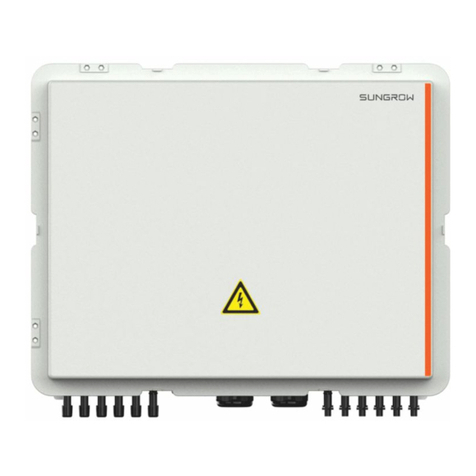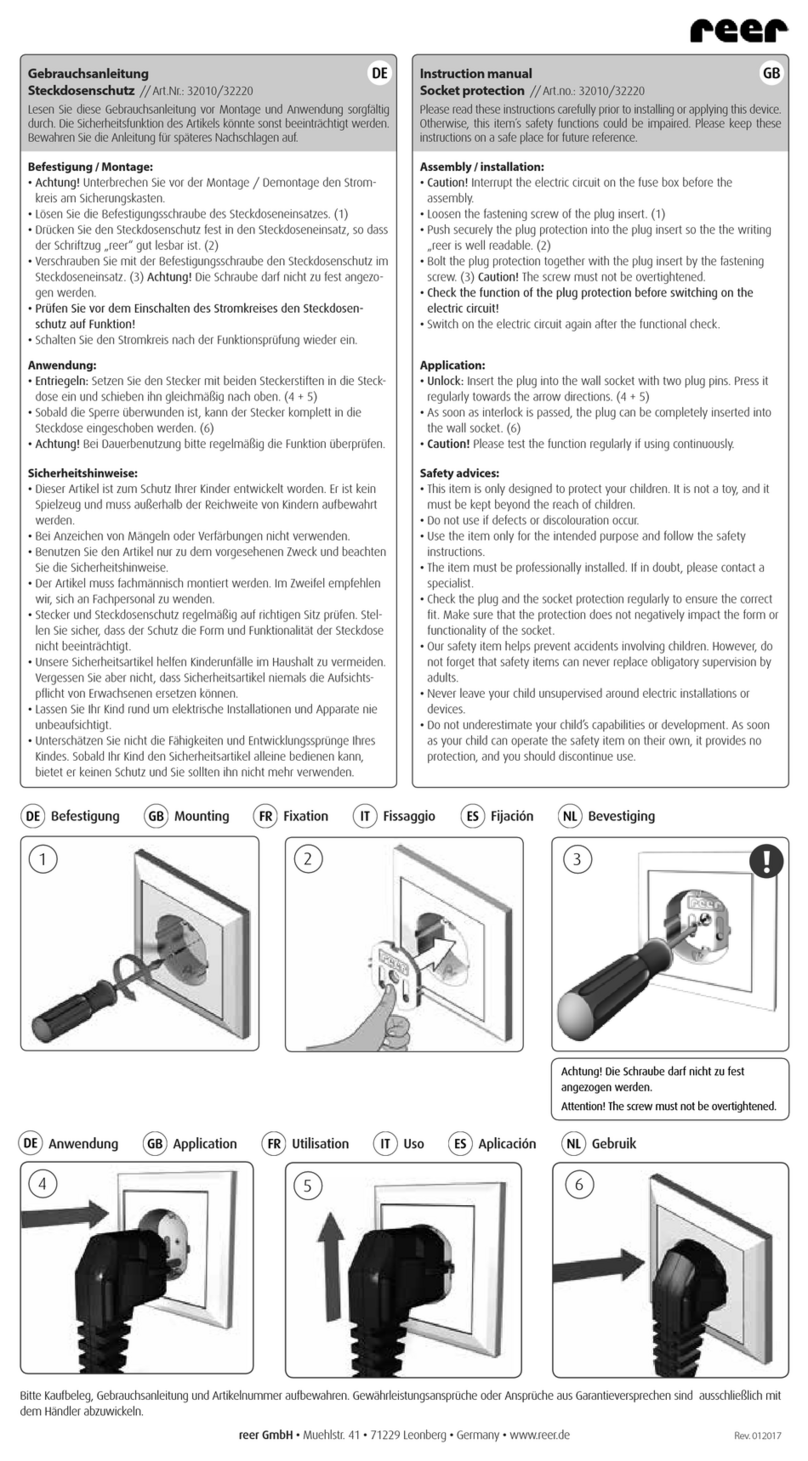
GE Multilin C70 Capacitor Bank Protection and Control System v
TABLE OF CONTENTS
5.4.4 BREAKERS...................................................................................................... 5-96
5.4.5 DISCONNECT SWITCHES ........................................................................... 5-100
5.4.6 FLEXCURVES ............................................................................................... 5-103
5.5 FLEXLOGIC
5.5.1 INTRODUCTION TO FLEXLOGIC ................................................................ 5-110
5.5.2 FLEXLOGIC RULES ...................................................................................... 5-121
5.5.3 FLEXLOGIC EVALUATION ........................................................................... 5-121
5.5.4 FLEXLOGIC EXAMPLE ................................................................................. 5-122
5.5.5 FLEXLOGIC EQUATION EDITOR................................................................. 5-126
5.5.6 FLEXLOGIC TIMERS .................................................................................... 5-126
5.5.7 FLEXELEMENTS........................................................................................... 5-127
5.5.8 NON-VOLATILE LATCHES ........................................................................... 5-131
5.6 GROUPED ELEMENTS
5.6.1 OVERVIEW.................................................................................................... 5-132
5.6.2 SETTING GROUP ......................................................................................... 5-132
5.6.3 BREAKER FAILURE...................................................................................... 5-133
5.6.4 PHASE CURRENT ........................................................................................ 5-142
5.6.5 NEUTRAL CURRENT.................................................................................... 5-157
5.6.6 GROUND CURRENT..................................................................................... 5-169
5.6.7 NEGATIVE SEQUENCE CURRENT ............................................................. 5-171
5.6.8 VOLTAGE ELEMENTS.................................................................................. 5-176
5.7 CONTROL ELEMENTS
5.7.1 OVERVIEW.................................................................................................... 5-195
5.7.2 TRIP BUS....................................................................................................... 5-195
5.7.3 SETTING GROUPS ....................................................................................... 5-197
5.7.4 SELECTOR SWITCH..................................................................................... 5-199
5.7.5 TIME OF DAY TIMERS.................................................................................. 5-205
5.7.6 CAPACITOR CONTROL................................................................................ 5-206
5.7.7 AUTOMATIC VOLTAGE REGULATOR......................................................... 5-211
5.7.8 DIGITAL ELEMENTS..................................................................................... 5-216
5.7.9 DIGITAL COUNTERS .................................................................................... 5-219
5.7.10 MONITORING ELEMENTS ........................................................................... 5-221
5.8 INPUTS AND OUTPUTS
5.8.1 CONTACT INPUTS........................................................................................ 5-233
5.8.2 VIRTUAL INPUTS.......................................................................................... 5-235
5.8.3 CONTACT OUTPUTS.................................................................................... 5-236
5.8.4 VIRTUAL OUTPUTS...................................................................................... 5-238
5.8.5 REMOTE DEVICES ....................................................................................... 5-239
5.8.6 REMOTE INPUTS.......................................................................................... 5-240
5.8.7 REMOTE DOUBLE-POINT STATUS INPUTS .............................................. 5-241
5.8.8 REMOTE OUTPUTS...................................................................................... 5-241
5.8.9 RESETTING................................................................................................... 5-242
5.8.10 DIRECT INPUTS AND OUTPUTS................................................................. 5-243
5.8.11 IEC 61850 GOOSE ANALOGS...................................................................... 5-246
5.8.12 IEC 61850 GOOSE INTEGERS..................................................................... 5-247
5.9 TRANSDUCER INPUTS AND OUTPUTS
5.9.1 DCMA INPUTS .............................................................................................. 5-248
5.9.2 RTD INPUTS.................................................................................................. 5-249
5.9.3 DCMA OUTPUTS .......................................................................................... 5-251
5.10 TESTING
5.10.1 TEST MODE .................................................................................................. 5-254
5.10.2 FORCE CONTACT INPUTS .......................................................................... 5-255
5.10.3 FORCE CONTACT OUTPUTS ...................................................................... 5-256
6. ACTUAL VALUES 6.1 OVERVIEW
6.1.1 ACTUAL VALUES MENU .................................................................................. 6-1
6.2 STATUS
6.2.1 CONTACT INPUTS............................................................................................ 6-3
6.2.2 VIRTUAL INPUTS.............................................................................................. 6-3
6.2.3 REMOTE INPUTS.............................................................................................. 6-3
6.2.4 REMOTE DOUBLE-POINT STATUS INPUTS .................................................. 6-4
